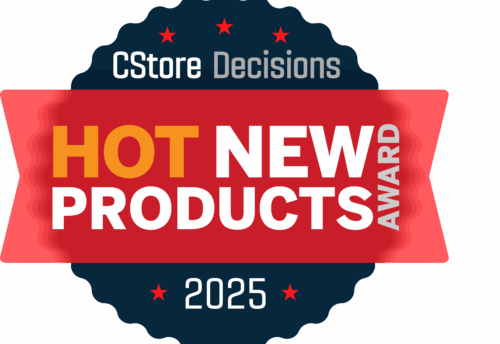
Transforming The Manufacturer-Distributor Relationship
In the world of industrial manufacturing, two primary options exist for getting products to market: direct selling and distribution sales. While there are many merits to the direct selling model, there are also a large amount of challenges associated with this method, most of which stem from the complexity of supply chain management. Because of these issues, many manufacturers instead opt to sell their products through distribution channels.
Distributors, sometimes referred to as dealers or authorized agents, buy inventory directly from manufacturers and then resell these products through their own network of retail locations and/or e-commerce sites. Not only do manufacturers alleviate some of their logistics and marketing burdens by selling through distribution, but they also ensure that their products are getting to the right customers at the right time, due to the accessibility afforded by a diverse network of distribution locations.
The manufacturer-distributor relationship is a symbiotic one by nature; without distributors, manufacturers would struggle with getting their products to customers, and without manufacturers, distributors would have nothing to sell. In theory, this seems like a rudimentary concept to understand, but in application, not all manufacturer-distributor relationships are that cut-and-dry. Each entity has their own respective objectives & goals, and as such, it is the responsibility of both parties to work together to understand each other’s needs and overcome any challenges their relationship might encounter. Ultimately, the goal is to transform a purely transactional relationship into one of alignment & partnership. This is no easy task, and in this post, we’ll discuss some ways to go about executing that transformation.
Understanding Common Challenges
Before we can discuss how to improve the manufacturer-distributor relationship, we must first understand some of the challenges that each party individually faces as it relates to their relationship, but moreover, understand where these individual challenges might overlap and misalign with the other party.
From the manufacturing point of view, it can often be difficult to maintain the integrity and consistency of a brand as its products get disseminated throughout a complex distribution network laden with numerous customer touch-points. Because of this, manufacturers must be able to support their distributors indirectly through various marketing efforts, like promotional materials, digital engagement programs, and a steady flow of sales qualified leads. Additionally, manufacturers need to be able to continuously & effectively engage with the right distributors, representatives, and customers at every interval of their supply chain in order to consistently drive their bottom line.
Distributors, on the other hand, are independent businesses whose internal goals do not always align with those of their suppliers. For example, because distribution sales are primarily focused on margins, distributors might be more inclined to sell an older, more familiar product instead of a newer product that the manufacturer wants to presently push. This seems to be a common occurrence, as a report from Warne marketing noted that only “52% of distributors actively promote new products during the products’ introduction.”
Often times, this misalignment can be caused by a lack of support, either perceived or actual, that the distributor receives from the manufacturer. In fact, lack of support from manufacturers is the biggest complaint that distributors have. It is important to note that just as a single manufacturer might sell through multiple distributors, a single distributor will undoubtedly be representing multiple manufacturers. This creates an issue of a need for exclusivity, and while not always an achievable outcome, distributors constantly vie for this opportunity to drive their own business.
When these types of challenges arise and discord is allowed to persist, conflict, distrust, and miscommunication can stop even the most resilient of relationships dead in its tracks. Thus, it is imperative for manufactures and their distributors to work together in synergy to help each other succeed and achieve a lasting partnership.
Building a Lasting Partnership
By nature, managing an ongoing partnership is considerably more difficult than managing a standard supplier or customer relationship. The first step on this journey involves gaining an intrinsic understanding of the other party’s needs and the willingness & desire to address and take meaningful action on those needs. From the perspective of the manufacturer, there are a variety of opportunities to acquire this insight:
· Engage with your distributors in person and attend their events. This expresses more value & commitment than a simple email or hasty telephone call
· Establish clear expectations at the onset of the relationship and reinforce them as the partnership progresses
· Enable your distributors with a steady flow of marketing materials, training, technical documentation, qualified leads, and ongoing support
· Champion open and two-way communication with your distributors to ensure that disagreements are faced head on and that ideas can be heard
· Address issues stemming from miscommunication as soon as they arise, rather than waiting and ultimately letting them do more damage
· Invest in technology that opens up feedback and visibility into distributors sales efforts and follow-up rates.
These are some high-level suggestions on how to start improving your relationship with your distributors, but as Art Weschler of Ed Brown Distributors says “All good relationships—professional or otherwise—are built on a foundation of trust. The intangible result of this trusting foundation? Motivation, goodwill, and cooperation. The tangible? The manufacturer and distributor both end up seeing reductions in turnover, lower costs, increased performance and above all else, satisfied end-users.
Transforming your manufacturer-distributor relationship into a partnership is no easy task, but by listening to your distributors and investing yourself in the challenges they face, you can begin to create a lasting collaboration that will be mutually beneficial for both parties.
Are you struggling to get feedback from your distributors? Does it seem impossible to get them to follow-up on any of the leads that you send to them? Or, do you want to drive better mindshare in conjunction with the methods listed here? LeadLift might be able to help you achieve those goals.





Leave a Comment
You must be logged in to post a comment.